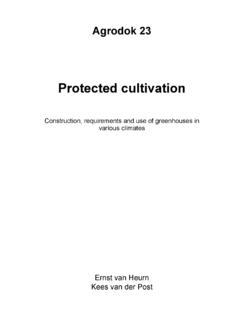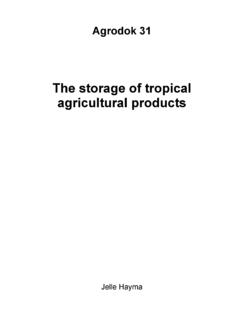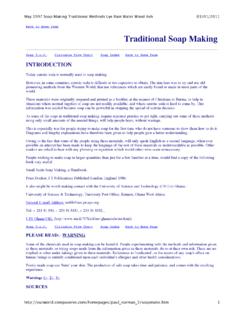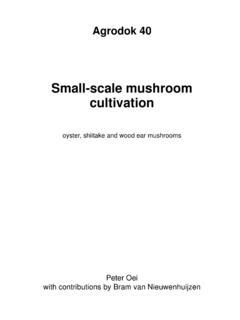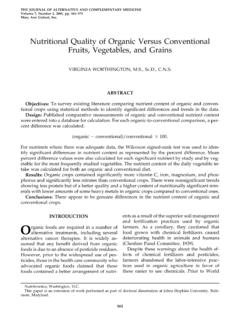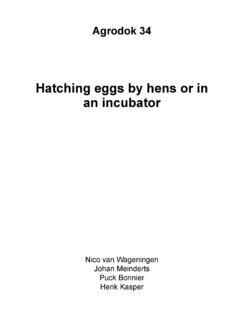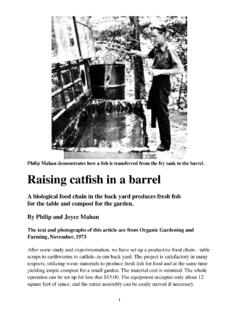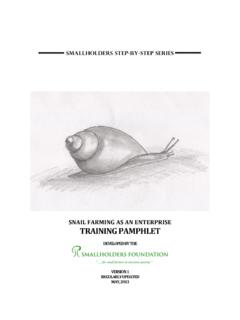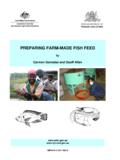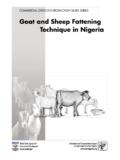Transcription of The vegetable garden in the tropics - Journey to Forever
1 Agrodok 9 The vegetable garden in the tropics Henk Waaijenberg Agromisa Foundation, Wageningen, 2003. All rights reserved. No part of this book may be reproduced in any form, by print, photocopy, microfilm or any other means, without written permission from the publisher. First English edition: 1989 Third revised edition: 1994 Fourth edition: 2003 Author: Henk Waaijenberg Translation: I. Veerman Printed by: Stoas Digigrafi, Wageningen, the Netherlands ISBN: 90-77073-50-7 NUGI: 835 Foreword 3 ForewordThis Agrodok does not pretend to be an original work. In fact it is an anthology of the literature mentioned in the bibliography.
2 The main objective of this Agrodok is to serve as a general manual for those who practise or teach gardening in developing countries, in or-der to improve the living conditions of the inhabitants of these coun-tries. I would like to thank Mr. Grubben of the Royal Institute for the tropics , Amsterdam, and several others who have corrected the text and given important advice. Henk Waaijenberg The vegetable garden in the tropics 4 Contents1 Why gardening? 6 2 Fruit and vegetables in the diet 7 3 Which type of garden ? 11 Gathering wild fruits and vegetables 11 Vegetables in mixed cultivation with field crops 11 The homesite farm 12 Intensive cultivation for family use 12 Commercial vegetable growing 13 Other gardens.
3 Communal, school and demonstration gardens 13 4 garden tools 15 5 Preparing the site 18 The best site for a garden 18 Size and design of the garden 19 Clearing the site 20 Cultivating the soil 21 Preparing the beds 23 Fences 24 6 Soil improvement 26 Soil conditioning 26 Plant nutrients 26 Organic manure 28 Chemical fertilizers 32 Crop rotation 33 7 Sowing and propagation by cuttings 35 Seeds 35 Direct Sowing 38
4 Contents Sowing in a nursery 41 Transplanting 43 Taking cuttings 45 8 From sowing to harvest: techniques of cultivation 46 Watering 46 Control of diseases, insects and other parasites 47 Other techniques of cultivation 53 9 Choosing the right crops 57 Further reading 59 Useful addresses 60 Appendix 1: Some important vegetables 62 Appendix 2: Data about important vegetables 64 Appendix 3: List of technical terms 66 Appendix 4: Pictures of common vegetables in the tropics 69 The vegetable garden in the tropics 6 1 Why gardening?
5 Throughout the tropics people grow fruit and vegetables in their own vegetable gardens. Why do they keep a garden ? ? It assures them good food at low cost. Fruit and vegetables are nec-essary for the good health of children and adults. They make their diet more balanced and tastier. By keeping a garden people are less dependent on shops and markets, where supplies are often irregular and prices are high. ? It is a source of revenue. By selling produce not needed for personal use, the gardener can earn extra money. ? It is a pleasant and instructive pastime. Figure 1: A garden requires little space. A surface of 50 to 100 square metres, when efficiently used, can provide all the vegeta-bles needed to feed a family of six.
6 Fruit and vegetables in the diet 72 Fruit and vegetables in the diet In a garden you will find vegetables, fruit trees, herbs, spices and some-times flowers. In this Agrodok we will deal mainly with the cultivation of vegeta-bles, as they form the most important part of the garden and the garden produce. Because of their size most gardens contain only a limited number of fruit trees. Spices such as ginger and hot pepper are consumed only in small quantities, and therefore hardly contribute to human nutrition. Several other cultivated plants can be used as vegeta-bles, such as the leaves of cassava, sweet potato, cocoyam and taro, but generally these plants are cultivated in large fields.
7 We can divide vegetables into the following types: 1 Leaf vegetables, grown for their green leaves, such as Ceylon spin-ach, amaranth, lettuce, cabbage. 2 Fruit vegetables, grown for their fleshy fruits, such as tomatoes, eggplant and string beans. 3 Seed vegetables, grown for their dried seeds, such as groundnuts, beans pigeon peas and some Cucurbita species (the West African goussi ). 4 Root vegetables, grown for their fleshy roots or lower stems, such as carrots, turnips, radish. 5 Miscellaneous vegetables, such as cauliflower, asparagus, onions. The nutritive value of root vegetables is comparable to that of tubers like sweet potato and cocoyam, or may be even higher; carrots contain a lot of carotene, rich in vitamin A.
8 Table 1 gives an impression of the composition of these types of vege-tables and allows us to compare their nutritive value with that of some other food-stuffs. Men, women and children need a balanced diet to stay in good health and to be able to work and grow. Proper nutrition pro-vides the body with the following substances: 1 Carbohydrates, which provide energy to the body. One gram gives 4 kilocalories or kilojoules of energy. Sources: flour, starch, sugar, The vegetable garden in the tropics 8 cereals, tubers, bananas, legumes. Those foodstuffs that are eaten daily in large quantities are called staple foods. 2 Fats, which provide energy and make carotene more digestible for the human body.
9 One gram gives 9 kilocalories or 38 kilojoules. Sources: coconut, oilpalm, peanut and maize oil, avocado, animal products. 3 Proteins, the material of which our bodies are made. Proteins are necessary for growth and development of the body and are very im-portant for children and for women during pregnancy and when they are breastfeeding. Sources: cereals, seed vegetables, animal products. 4 Minerals, substances like iron and calcium which are taken up by plants from the soil. The most important minerals are: calcium, the mineral of which bones and teeth are composed. Sources: leaf vegetables, seed vegetables, milk. iron, the mineral necessary for healthy blood.
10 Sources: leaf vegetables, seed vegetables, cereals, meat, eggs. 5 Vitamins, nutrients needed only in small quantities to preserve good health. Below are listed the most important vitamins. vitamin A, or retinol, protects the mucus membranes (nose, mouth) and the skin and plays an important role in vision. The body produces this vitamin out of beta-carotene. Sources of vitamin A: milk, eggs. Sources of carotene: leaf vegetables (especially those with dark green leaves), fruit vegetables (chillies), fruits (papaya), carrots. vitamin B1, or thiamin, is necessary for the functioning of the nervous system. Lack of vitamin B1 causes beri-beri . Sources: fruit-vegetables, germ and bran of cereals, eggs, milk.

